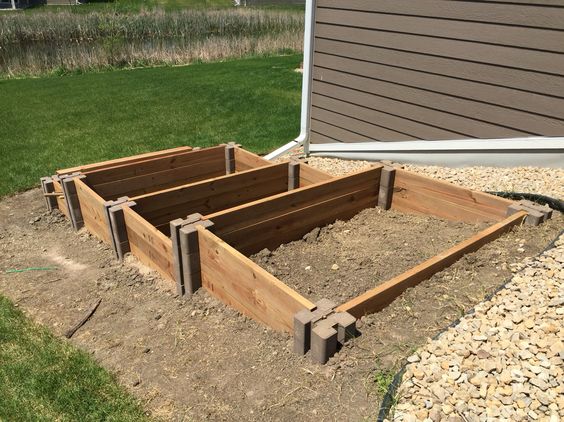Frozen shale preventing getting step-in fencing in
Since we've had so little snow I decided to set up a small run surrounded by Premier 1's PoultryNet Plus. Part of the line I want to run is on the edge of our shale driveway. Normally I use a strong (steel?) tent stake and a hammer to drive holes into the shale for the step-in pins), but here I could only get about an inch, then it’s frozen solid rock, not breaking or moving at all, really impossible. The stake began bending. It’s not great work at any time of the year though, and I’m looking for a year-round alternative.
Crazy Idea? Anyone else try this?
Had the idea of placing the poultry fence in what I found out are called planter blocks. Bought a few on a whim last summer while I was getting cinder blocks for winter tarp weights and daytime roost holders, I liked the shape, of these and the notches make them easy to grab and move around. Discovered this year that a step-in two-tined fence post fits in the hole and the notch. So I placed one on the shale and used a plain post to hang extra cable on next to the electric fence cut-off switch, it worked great!
View attachment 3412926
So I thought about this again. I would have to fill in below the electric fence in between the blocks because the fence bottom is now higher in this scenario. Realized the blocks are made for 2x lumber to make planter boxes (duh! see the image below), and found a scrap 2x8 to try and I laid out two blocks and a length of fence.

The scrap wood is just a little long, but hopefully you can see what I mean. I have one or maybe two more planter blocks to experiment with and lay it out further, but right now it’s behaving much like step-in poultry netting does. The end fence poles, if tied or braced to something, will pull the fence straight I think. Laterally, they seem to have as much strength as when in soil, because the blocks are as deep as the tines, and I could pound in some wooden wedges into the middle hole and stop any wiggling of one tine, but they could still lift out without much trouble, which is good. Or maybe bad? Normally there's some stick when the tines are in soil. Definitely stick when they're in shale.
I have not considered connecting two fence lengths together; the run I am considering would be out from one side of my weather-protected enclosed run, around some greenhouse frames hung with 2" aviary netting, and back to another side, using one continuous length.
Has anyone else tried this idea, and if so what were your results?
View attachment 3411849
View attachment 3411848
View attachment 3411847
Since we've had so little snow I decided to set up a small run surrounded by Premier 1's PoultryNet Plus. Part of the line I want to run is on the edge of our shale driveway. Normally I use a strong (steel?) tent stake and a hammer to drive holes into the shale for the step-in pins), but here I could only get about an inch, then it’s frozen solid rock, not breaking or moving at all, really impossible. The stake began bending. It’s not great work at any time of the year though, and I’m looking for a year-round alternative.
Crazy Idea? Anyone else try this?
Had the idea of placing the poultry fence in what I found out are called planter blocks. Bought a few on a whim last summer while I was getting cinder blocks for winter tarp weights and daytime roost holders, I liked the shape, of these and the notches make them easy to grab and move around. Discovered this year that a step-in two-tined fence post fits in the hole and the notch. So I placed one on the shale and used a plain post to hang extra cable on next to the electric fence cut-off switch, it worked great!
View attachment 3412926
So I thought about this again. I would have to fill in below the electric fence in between the blocks because the fence bottom is now higher in this scenario. Realized the blocks are made for 2x lumber to make planter boxes (duh! see the image below), and found a scrap 2x8 to try and I laid out two blocks and a length of fence.

The scrap wood is just a little long, but hopefully you can see what I mean. I have one or maybe two more planter blocks to experiment with and lay it out further, but right now it’s behaving much like step-in poultry netting does. The end fence poles, if tied or braced to something, will pull the fence straight I think. Laterally, they seem to have as much strength as when in soil, because the blocks are as deep as the tines, and I could pound in some wooden wedges into the middle hole and stop any wiggling of one tine, but they could still lift out without much trouble, which is good. Or maybe bad? Normally there's some stick when the tines are in soil. Definitely stick when they're in shale.
I have not considered connecting two fence lengths together; the run I am considering would be out from one side of my weather-protected enclosed run, around some greenhouse frames hung with 2" aviary netting, and back to another side, using one continuous length.
Has anyone else tried this idea, and if so what were your results?
View attachment 3411849
View attachment 3411848
View attachment 3411847



